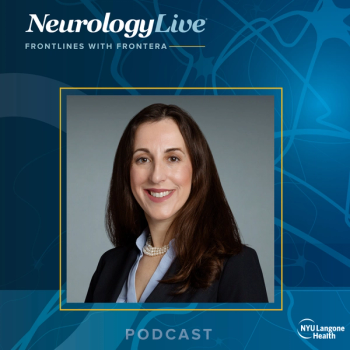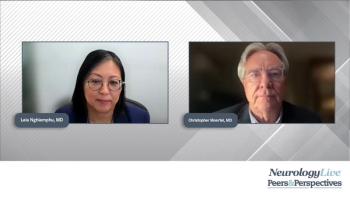
Understanding How a Rare Brain Wasting Disease Hides in Neurons For Decades

Key Takeaways
- CJD is a rare, fatal neurological condition linked to prions, with unknown infectious sources in most cases.
- A new study developed a cellular model of latent CJD infection, revealing neurons can switch between latent and active states.
Researchers uncover a latent infection model for Creutzfeldt-Jakob disease, revealing insights into its mysterious origins and potential triggers.
In April of this year, three people in Oregon developed Creutzfeldt-Jakob disease (CJD), a rare, fatal neurological condition that is similar to bovine spongiform encephalopathy, also known as mad cow disease. It impacts one or two people per million each year, making the chances of three cases emerging in the same small geographic area quite low. This outbreak is currently under investigation, but there may not be a simple explanation; for the majority of CJD cases, the infectious source is unknown.
CJD and mad cow disease are both transmissible spongiform encephalopathies, named for the sponge-like holes that compromise the brain as the disease progresses. These diseases can have long latency periods; CJD can remain dormant for up to 38 years, but once it spreads to the brain, it decimates the brain and kills its host.
An abnormally folded protein—called a prion—is the hallmark of neurodegeneration in CJD. Once formed, prions can’t be cleared, leading to a build-up of aggregated proteins that damage the brain. Some researchers believe the prions themselves are infectious, but
In the study, when the researchers induced rat neurons to divide, those infected with CJD looked just like healthy neurons. But when the researchers halted cell division, infected neurons quickly began producing infectious particles, and a robust immune response followed. Only then did the neurons begin to express many other changes resulting from infection. Interestingly, all forms of prion protein were reduced in these highly infectious neurons.
"Here we have a latent infection that we can turn on and turn off,” says Manuelidis, senior author of the study. “As a biological and disease mechanism, it's paradigm-shifting."
Latent infections hide in plain sight
Many pathogens evade immune responses by hiding or going dormant within cells. Infectious agents can persist for years in lymphoid tissues—where white blood cells are made—or selected specialized cells without producing symptoms. Herpes virus, for example, is present in more than half of the U.S. population, causing occasional outbreaks when a person is stressed, sick, or tired. Tuberculosis also has a long latency period when sequestered in lymph nodes, and the human immunodeficiency virus can take many years to manifest as disease.
Latent viruses often emerge when the immune system is weakened. "We carry a whole bunch of known latent viruses and other unknown elements," says Manuelidis, "and suddenly, when conditions are right, they come out of the woodwork."
To investigate how the infectious agent accumulates in CJD, the researchers looked at rat brain neurons that had stopped dividing. Unlike other cell types, mature neurons do not divide and can’t be replaced. For the study, the researchers engineered the neurons to continue dividing until the temperature was raised, upon which the neurons stopped dividing, or became arrested. This switch between division and arrest was meant to model physiological conditions in which CJD infection could re-emerge.
The researchers then analyzed gene expression patterns in uninfected and infected neurons, both while they were dividing and after their arrest.
Infected neurons behave differently after arrest
The infected neurons looked and acted almost indistinguishable from the uninfected ones during division, but several days after arrest, their gene expression patterns changed, the researchers found. The neurons activated innate immune response genes, signaling an infection, and upregulated a plethora of genes related to cell division even though division should have been arrested.
The infected neurons resumed cell division when they were returned to the low temperature environment but became infectious again upon re-arrest, switching between latent and re-activated infection. During the cell division phase, the neurons lost infectivity, the researchers found.
"Re-arrested cells responded as if they had been changed by the previous infection," says Manuelidis. Even though the latently infected neurons looked like normal dividing cells, they were primed to escape future arrest.
When CJD cells were re-arrested, they also increased production of the gene that encodes prion protein, but at a much lower level than the uninfected cells, signaling that the initial infection that was "lost" had modified the prion protein responses.
"We don’t know what the real molecular details of the infectious agent are,” says Manuelidis. Her goal is to find out what the agent is and where it is hiding during all those years of latent infection. This experiment, which reveals “a whole cellular response pattern," is just the tip of the iceberg, she says.
Neurodegenerative research has been concentrated on advanced end stages of disease, where misfolded proteins accumulate, such as beta-amyloid in Alzheimer’s disease. By addressing the early phases of disease, before the inevitable progression, Manuelidis aims to shed light on the diverse biological origins and mechanisms of CJD and other potential latent infections.
"As with many medical issues, there are numerous factors to consider,” she explains. "Protein misfolding and amyloid can be a sign of damage, and, like a scar, can be due to different causes such as toxins, infections, and trauma," says Manuelidis. "Just looking at the scars doesn’t tell you their initiating cause."
Newsletter
Keep your finger on the pulse of neurology—subscribe to NeurologyLive for expert interviews, new data, and breakthrough treatment updates.




















